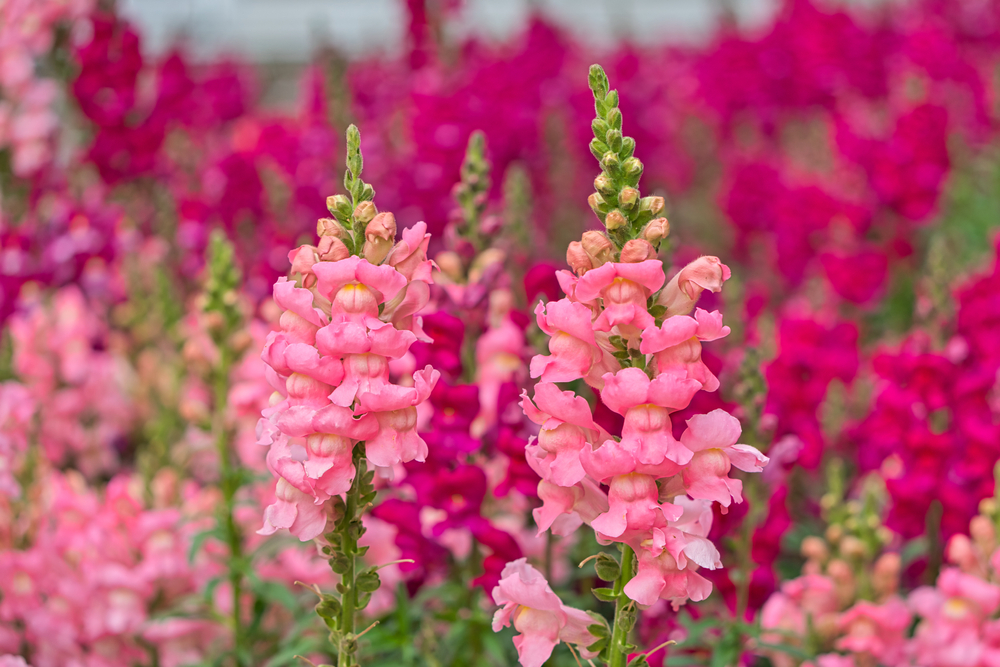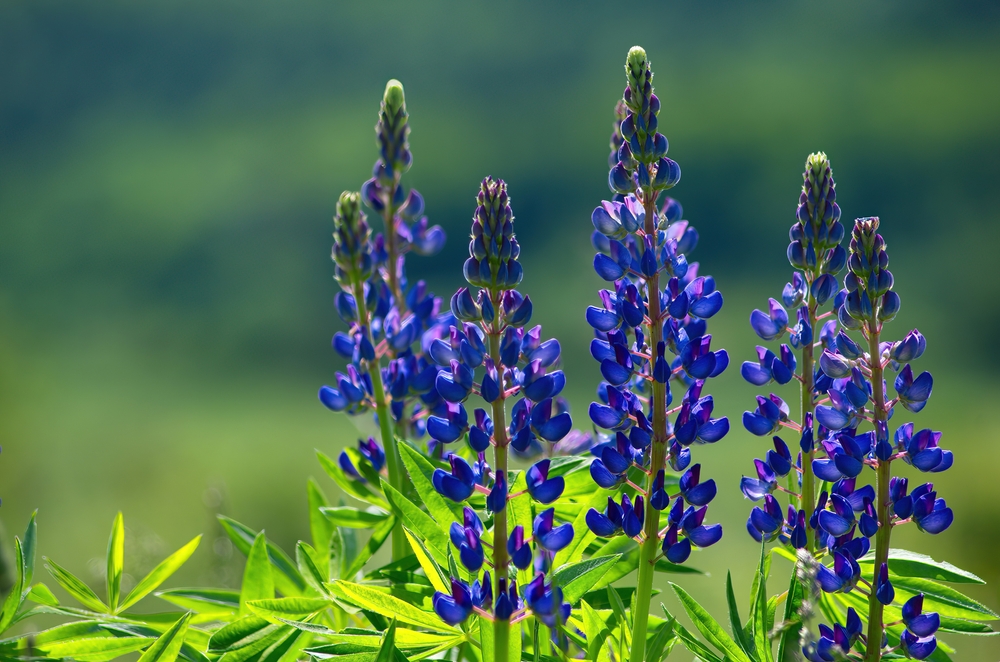Copyright © Everyday Narrative 2024. All rights reserved.
Copyright © Everyday Narrative 2024. All rights reserved.
- An Everyday Narrative Gallery Special -
It's time to start planting

Let’s dive into the top 20 flowers that you should consider planting now to ensure a vibrant and colourful garden throughout the season.
1. Tulips

Tulips are a springtime favourite known for their bright and cheerful blooms. These bulbs should be planted in well-drained soil and a sunny location. With a wide variety of colours and shapes, tulips can create stunning displays in garden beds and containers. Their classic cup-shaped flowers stand tall on sturdy stems, making them perfect for cutting gardens.
Plant tulip bulbs in the fall for spring blooms, ensuring they are set at a depth of about 6-8 inches. With proper care, tulips will return year after year, heralding the arrival of spring with their vibrant petals.
2. Daffodils

Daffodils, or Narcissus, are synonymous with spring. These hardy perennials feature trumpet-shaped flowers in shades of yellow, white, and orange. Plant daffodil bulbs in the fall, spacing them about 3-6 inches apart and 6 inches deep.
They thrive in full sun to partial shade and are deer-resistant, making them ideal for various garden settings. Daffodils are low-maintenance and can naturalize over time, creating larger and more impressive displays each year. Their cheerful blooms are a symbol of renewal and are perfect for borders, containers, and naturalized areas.
3. Hyacinths

Hyacinths are beloved for their intensely fragrant blooms and vibrant colours, ranging from deep purples and blues to pinks, whites, and yellows. Plant hyacinth bulbs in the fall, about 4-6 inches deep and spaced 3 inches apart. They prefer full sun to partial shade and well-drained soil.
Hyacinths make excellent border plants and are perfect for containers and indoor forcing. Their dense, spike-like clusters of flowers add a splash of colour and fragrance to any garden. To maintain healthy plants, provide adequate moisture during the growing season and allow the foliage to die back naturally.
4. Pansies

Pansies are versatile, cool-weather annuals known for their charming, face-like blooms. They come in a wide range of colours, from deep purples and blues to bright yellows and whites.
Pansies can be planted in early spring or fall, thriving in full sun to partial shade and well-drained soil. They are excellent for borders, containers, and window boxes. With regular deadheading, pansies can bloom continuously through the spring and even into early summer. Their ability to withstand light frosts makes them a resilient choice for early-season colour in the garden.
5. Primroses

Primroses are one of the first flowers to bloom in spring, offering a burst of colour when few other plants are awake. These perennials thrive in moist, well-drained soil and prefer partial shade. Plant primroses in the fall or early spring, spacing them about 6-12 inches apart. Their vibrant flowers come in a variety of colours, including red, yellow, pink, blue, and white, often with contrasting centres.
Primroses are perfect for garden borders, woodland gardens, and containers. They attract pollinators and can provide continuous colour from early spring through late summer with proper care.
6. Crocuses

Crocuses are small, cup-shaped flowers that often signal the arrival of spring. These hardy bulbs bloom in shades of purple, yellow, white, and striped varieties. Plant crocus bulbs in the fall, about 3 inches deep and 3 inches apart. They prefer full sun to partial shade and well-drained soil.
Crocuses are excellent for naturalizing in lawns, rock gardens, and under trees. Their early blooms provide a vital source of nectar for emerging pollinators. Crocuses are low-maintenance and will multiply over time, creating larger displays each spring.
7. Snowdrops

Snowdrops, or Galanthus, are among the earliest spring bloomers, often appearing when snow is still on the ground. These delicate, nodding white flowers are a symbol of hope and renewal. Plant snowdrop bulbs in the fall, about 3 inches deep and 3 inches apart, in well-drained soil and partial shade. They are perfect for woodland gardens, borders, and naturalized areas.
Snowdrops are low-maintenance and can naturalize over time, forming beautiful carpets of white flowers. Their early blooms provide an important food source for pollinators emerging from winter hibernation.
8. Ranunculus

Ranunculus flowers are prized for their layered, rose-like petals and vibrant colours, including shades of red, pink, yellow, and white. Plant Ranunculus corms in the fall in mild climates or in early spring in cooler areas, about 2 inches deep and 4-6 inches apart. They prefer full sun and well-drained soil.
Ranunculus are excellent for cutting gardens, containers, and borders. With proper care, including regular watering and feeding, these stunning flowers will reward you with a profusion of blooms throughout the spring. Their long vase life makes them a favourite for floral arrangements.
9. Peonies

Peonies are beloved for their large, fragrant blooms and lush foliage. These long-lived perennials come in a variety of colours, including pink, red, white, and yellow. Plant peony roots in the fall or early spring, ensuring the eyes are no more than 2 inches below the soil surface. They thrive in full sun and well-drained soil.
Peonies are perfect for borders, garden beds, and as specimen plants. Their blooms can last for several weeks in late spring, and the plants require minimal maintenance once established. Peonies are also excellent cut flowers, adding elegance to any bouquet.
10. Iris

Irises are striking plants with sword-like leaves and intricate blooms in a range of colours, including purple, blue, yellow, and white. Plant iris rhizomes in late summer or early fall, ensuring the top is just below the soil surface. They prefer full sun and well-drained soil.
Irises are ideal for borders, rock gardens, and naturalized areas. Their tall, sturdy stems and vibrant flowers make them excellent for cut flower arrangements. With proper care, including regular division every few years, irises will provide spectacular displays of colour in the spring garden.
11. Anemones

Anemones, also known as windflowers, are daisy-like flowers that bring a splash of colour to the spring garden. Plant anemone corms in the fall or early spring, about 2 inches deep and 4-6 inches apart. They prefer full sun to partial shade and well-drained soil.
Anemones come in a variety of colours, including red, pink, blue, and white. They are perfect for borders, rock gardens, and containers. These low-maintenance plants will naturalize over time, providing vibrant displays year after year. Anemones are also excellent for cutting, adding a cheerful touch to floral arrangements.
12. Lillies

Lilies are renowned for their large, fragrant blooms and elegant form. These perennials come in various colours, including white, yellow, pink, red, and orange. Plant lily bulbs in the fall or early spring, about 6 inches deep and 8-12 inches apart. They prefer full sun to partial shade and well-drained soil.
Lilies are ideal for borders, garden beds, and containers. With proper care, including regular feeding and staking for taller varieties, lilies will reward you with stunning blooms throughout the summer. Their long vase life makes them a popular choice for cut flowers.
13. Snapdragons

Snapdragons are tall, spiky flowers that add height and texture to the garden. They come in a wide range of colors, including red, pink, yellow, white, and purple. Plant snapdragon seeds or transplants in early spring, spacing them about 6-12 inches apart. They prefer full sun and well-drained soil.
Snapdragons are perfect for borders, containers, and cutting gardens. With regular deadheading, these annuals can bloom from spring through fall. Snapdragons attract pollinators and are deer-resistant, making them a valuable addition to any garden.
14. Foxgloves

Foxgloves are tall, biennial or perennial plants with striking bell-shaped flowers that grow on towering spikes. They come in shades of pink, purple, white, and yellow. Plant foxglove seeds or transplants in early spring or fall, spacing them about 12-18 inches apart. They prefer partial shade and well-drained soil.
Foxgloves are ideal for the back of borders, cottage gardens, and woodland settings. Their tall spikes add vertical interest and attract pollinators. Foxgloves are toxic if ingested, so they should be planted with care, especially in gardens with pets or small children.
15. Lupines

Lupines are tall, spiky flowers that bring vibrant colour and structure to the garden. They come in shades of blue, purple, pink, red, and white. Plant lupine seeds or transplants in early spring, spacing them about 12-18 inches apart. They prefer full sun and well-drained soil.
Lupines are perfect for borders, wildflower gardens, and cottage gardens. Their tall flower spikes attract pollinators and add vertical interest. Lupines can fix nitrogen in the soil, improving its fertility. With proper care, including regular deadheading, lupines will provide beautiful blooms throughout the spring and early summer.
16. Dianthus

Dianthus, also known as “pinks” for their fringed petals, are fragrant, low-growing perennials. They come in shades of pink, red, white, and lavender. Plant dianthus seeds or transplants in early spring, spacing them about 6-12 inches apart. They prefer full sun and well-drained soil.
Dianthus are perfect for borders, rock gardens, and containers. Their spicy fragrance and long-lasting blooms make them a garden favourite. Regular deadheading will encourage continuous flowering. Dianthus attract pollinators and are deer-resistant, making them an excellent choice for any garden.
17. Sweet Peas

Sweet peas are climbing annuals known for their sweet fragrance and delicate blooms. They come in a variety of colours, including pink, purple, white, and red. Plant sweet pea seeds in early spring, about 1 inch deep and 2-3 inches apart. They prefer full sun and well-drained soil.
Sweet peas are perfect for trellises, fences, and arbours. Their fragrant flowers make them a popular choice for cut flower arrangements. With regular watering and deadheading, sweet peas will bloom throughout the spring and early summer, adding a delightful scent to your garden.
18. Bleeding Hearts

Bleeding hearts are shade-loving perennials with unique, heart-shaped flowers that dangle from arching stems. They come in shades of pink, red, and white. Plant bleeding heart roots or transplants in early spring, spacing them about 12-24 inches apart. They prefer partial to full shade and well-drained soil.
Bleeding hearts are perfect for woodland gardens, shady borders, and containers. Their delicate, pendulous flowers bloom in late spring to early summer. With proper care, including adequate moisture and protection from harsh sunlight, bleeding hearts will thrive and provide enchanting blooms year after year.
19. Forget-Me-Nots

Forget-me-nots are small, dainty flowers with bright blue petals and yellow centres. These biennial or perennial plants are perfect for ground cover and naturalizing. Plant forget-me-not seeds or transplants in early spring, spacing them about 6-12 inches apart. They prefer partial shade and moist, well-drained soil.
Forget-me-nots are ideal for borders, woodland gardens, and containers. Their prolific blooms provide a carpet of colour in the garden, attracting pollinators. With proper care, forget-me-nots will reseed and return each year, ensuring continuous springtime displays of their charming blue flowers.
20. Hellebores

Hellebores, also known as Lenten roses, are hardy perennials with unique, cup-shaped flowers. They come in shades of white, pink, purple, and green. Plant hellebore transplants in early spring or fall, spacing them about 18-24 inches apart. They prefer partial to full shade and well-drained soil.
Hellebores are perfect for woodland gardens, shady borders, and containers. Their early blooms often appear when few other plants are flowering, providing a welcome splash of colour in late winter to early spring. With proper care, including protection from harsh winter winds, hellebores will thrive and naturalize over time.
Garden Tools At The Ready

Planting these top 20 flowers in your garden this spring will ensure a vibrant and colourful display throughout the season.
Each flower brings its unique charm and beauty, transforming your garden into a haven of blooms. So, roll up your sleeves, get your gardening tools ready, and embrace the joys of spring planting. Happy gardening!
Gallery Specials
Latest Articles
- Disney Remakes the Timeless Classic ‘Snow White’
- Here’s what to expect from Season 4 of Slow Horses, only on Apple TV+
- Marvel’s ‘Agatha All Along’ coming soon
- Adam Sandler Announces ‘Happy Gilmore 2’
- Jennifer Lopez files for divorce from Ben Affleck to end her fourth marriage
- On this day in 1995, the Battle of Britpop reached its climax
- Vince Vaughn Returns in the New Dark Apple TV+ Comedy ‘Bad Monkey’
- Matt Damon and Casey Affleck lead a star-studded cast in ‘The Instigators’
- The anticipation builds for ‘The Last of Us’ Season 2
- Has Simone Biles cemented her place as the greatest American Olympian of all time?
- Anticipation grows for the Disney sequel ‘Moana 2’
- A battle begins at Royal Troon for The Open Golf Championship 2024
- The evolution of binge-watching
- Tom Hanks reunites with Robin Wright in ‘Here’
- Taylor Swift’s ‘Eras Tour’ is a phenomenal success















